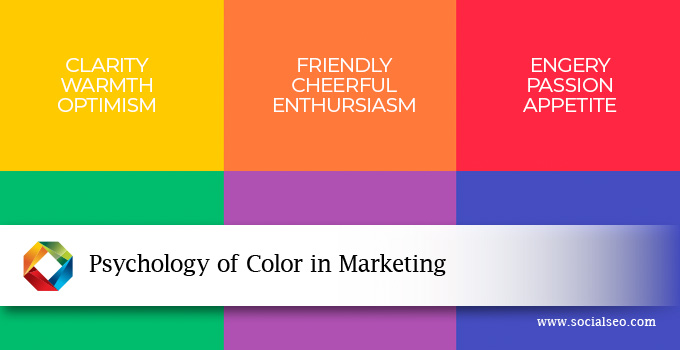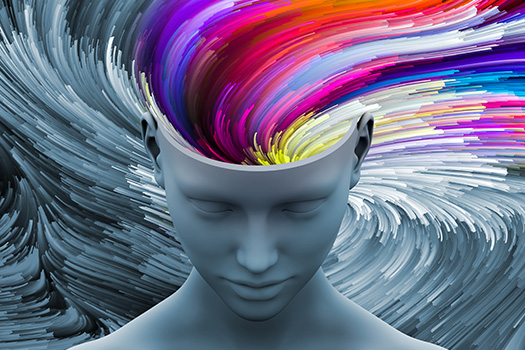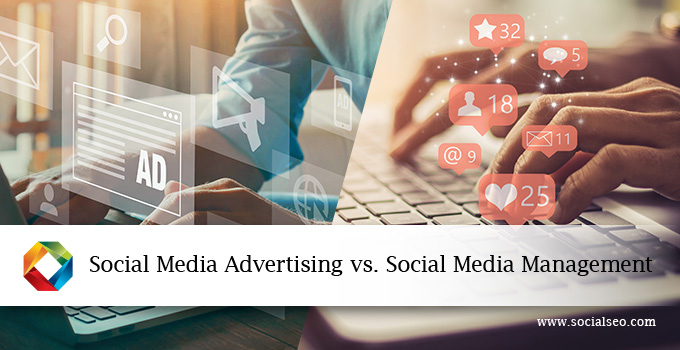In a previous blog post, we went over the basics of content optimization – what…

Psychology of Color in Marketing
You obviously put a lot of thought into many aspects of your marketing campaigns, but how much do you think about what colors you’re using? Most businesses like to stick to their brand colors and will maybe mix things up around the holidays – red, green, white, silver, and gold during the winter season, black, orange, and purple around Halloween, and so on – but never give it much more consideration to the psychology of color in marketing. Color is often an overlooked aspect of both traditional and digital marketing, and this is despite the fact that the intentional use of color is a very powerful tool that can influence responses and reactions in a target audience.
Whether you’re creating display ads, social media posts, graphics for an email drip campaign, or any other kind of images that will be used for marketing purposes, it’s crucial to understand color psychology and take the science behind it into account. Here, we’ll be going over a brief overview of what the psychology of color in marketing is, and how you can use color to improve your marketing efforts.
Color Theory vs Color Psychology
You’re likely aware of color theory, which is the idea that certain combinations of colors are more appealing to humans and the study of how colors mix and match and contrast one another, but color psychology goes much deeper than this. Color psychology is the science of how color can impact human behavior, attitudes, emotions, and, ultimately, decision-making.
It’s been shown that colors can even change alpha brain waves and impact heart rate as well. Color plays a bigger role in our everyday actions than you may have ever expected. Psychology of color in marketing is extremely important, and it can dramatically impact the success you your products and services.
What Are The Effects of Colors?
Colors can impact people in a wide variety of ways, but we’ll only be looking at the effects of colors that are most relevant in a marketing context.
- Red: Red is a very striking color that demands attention and triggers urgency in an audience. It’s commonly used for call-to-action buttons and to announce sales or product discounts in an effort to make consumers feel they need to convert and buy the product, order the service, or contact the business right away. The feeling of urgency red instills is especially effective on impulsive consumers.
- Blue: Blue is a more calming color that can make consumers feel that a brand is more trustworthy and reliable. To have this effect, lighter blue tones are typically better than darker ones.
- Green: Darker tones of green are commonly associated with money and wealth. Lighter tones are more associated with nature and thus evoke feelings of calmness and tranquility. Light green can also make consumers think of freshness, growth, and hope.
- Yellow: Yellow is a very happy color that signifies cheerfulness, youth, energy, clarify, and optimism to consumers. It also can trigger feelings of urgency, although nowhere nearly as strong as red. Thus, yellow can often be used to generate more engagement online.
- Purple: Dark purple signifies royalty, power, and loyalty, while lighter tones get more associated with nostalgia and sentimentality. Brands can use purple to make their products appear more high-quality or luxurious or appeal to nostalgia in consumers.
- Orange: Perhaps unsurprisingly, orange has some of the same qualities as red and yellow. It’s a very energetic, warm, and radiant color that can be used to grab a consumer’s attention, and it also signifies youth and playfulness. Think of orange as combining the energy and urgency of red with the happiness of yellow.
- Black: Black is a very strong color that can make a brand appear more serious, dedicated, and sophisticated to consumers. Similar to blue, it can also be used to make products or services seem more high-quality and trustworthy.
- White: Purity, cleanliness, safety, neutrality, and innocence come to mind when consumers see white. Brands can use the color to communicate clarity, and the cleanliness of white space will draw their eyes.
Want color marketing help from the experts? Give SocialSEO, an Intero Digital Company, a call today for a free consultation! We’re here to assist in all your marketing needs, including color decisions. Call now!




